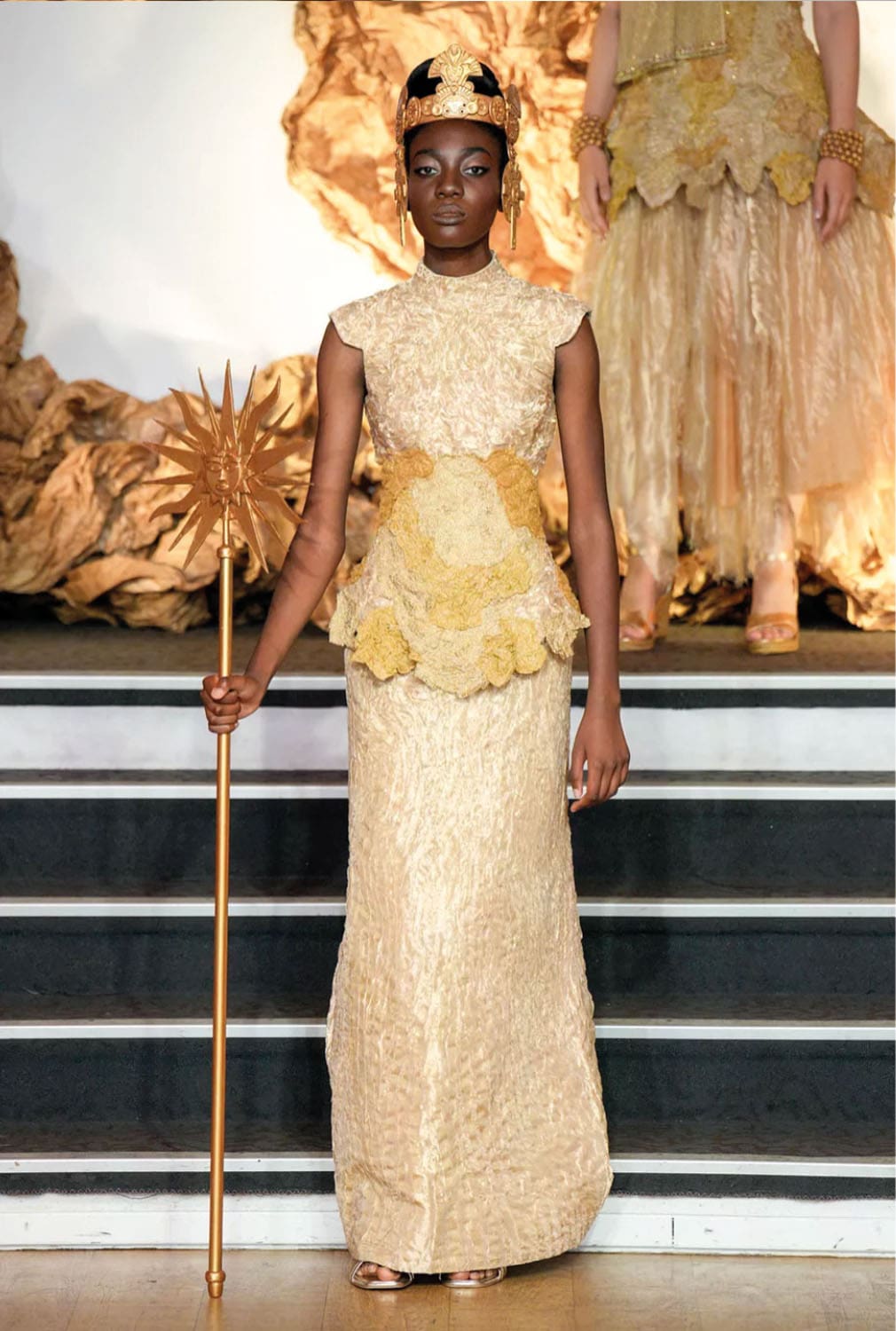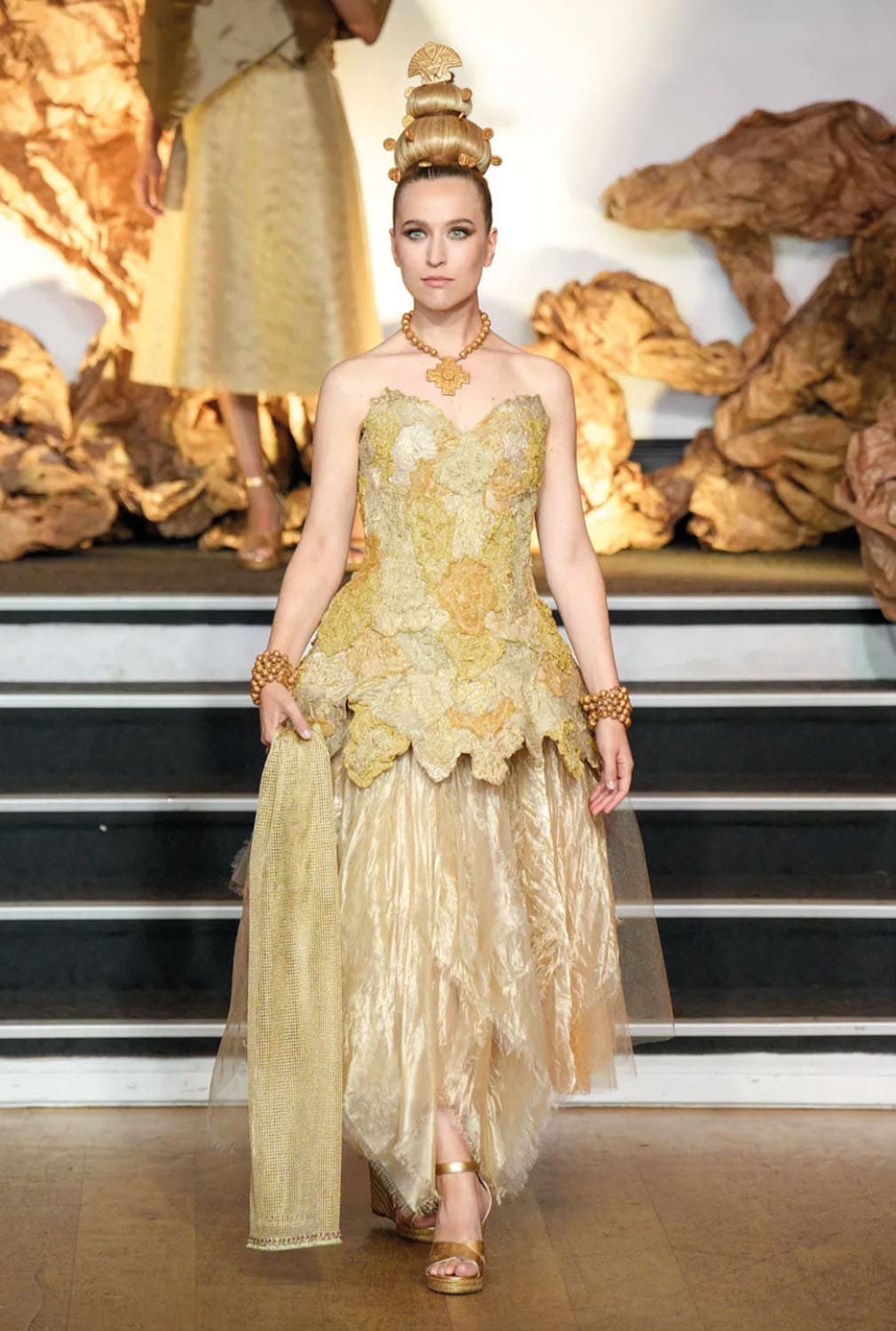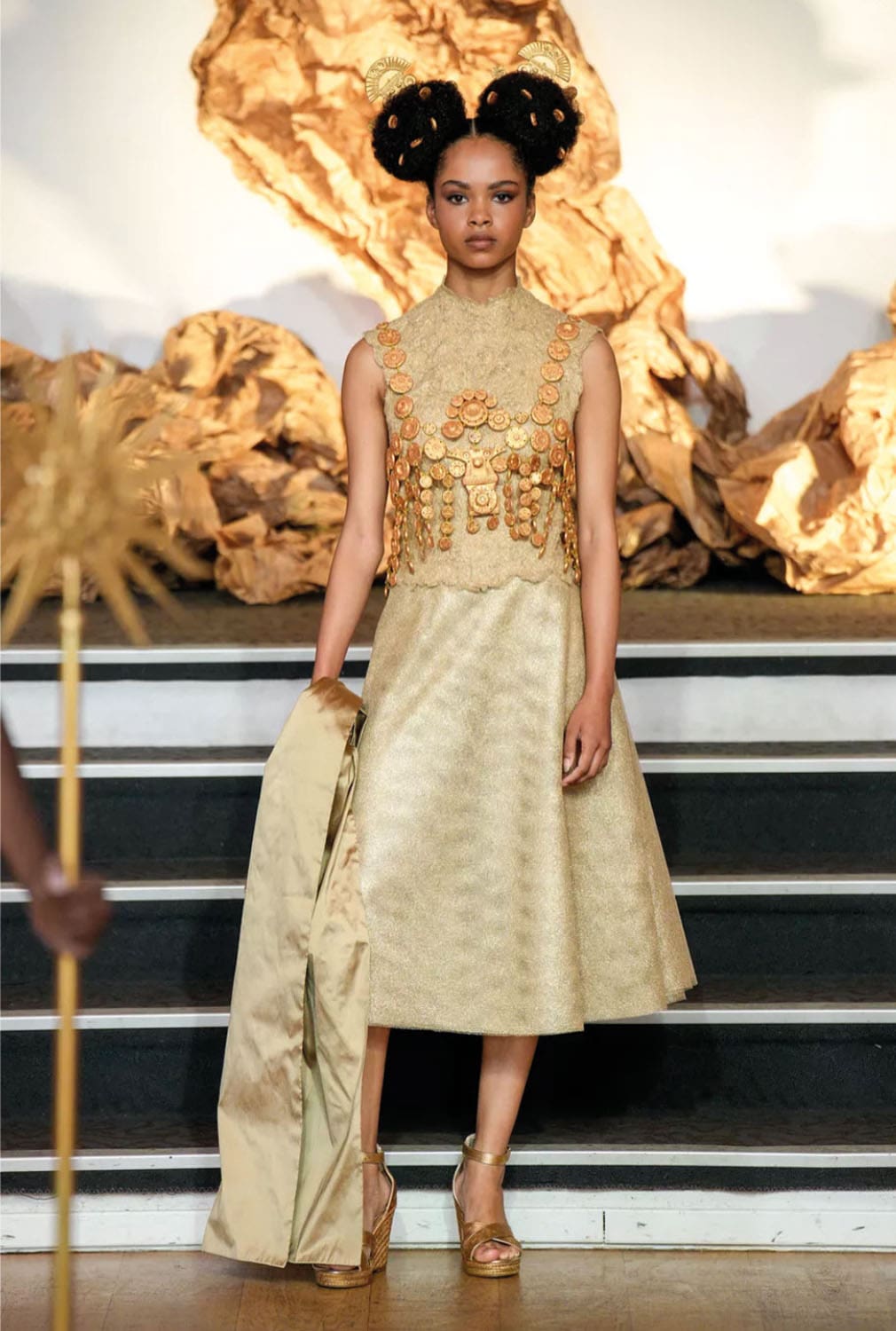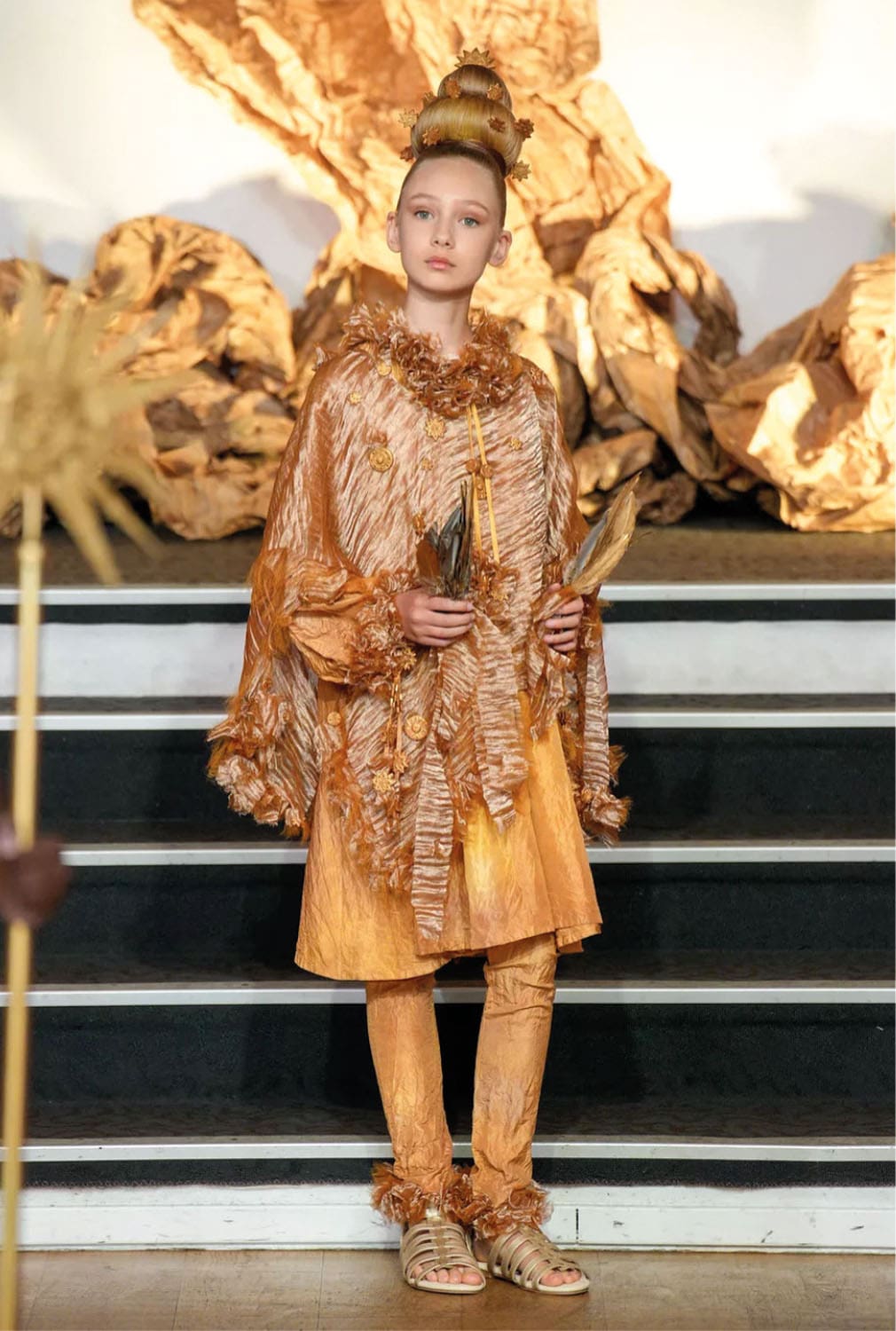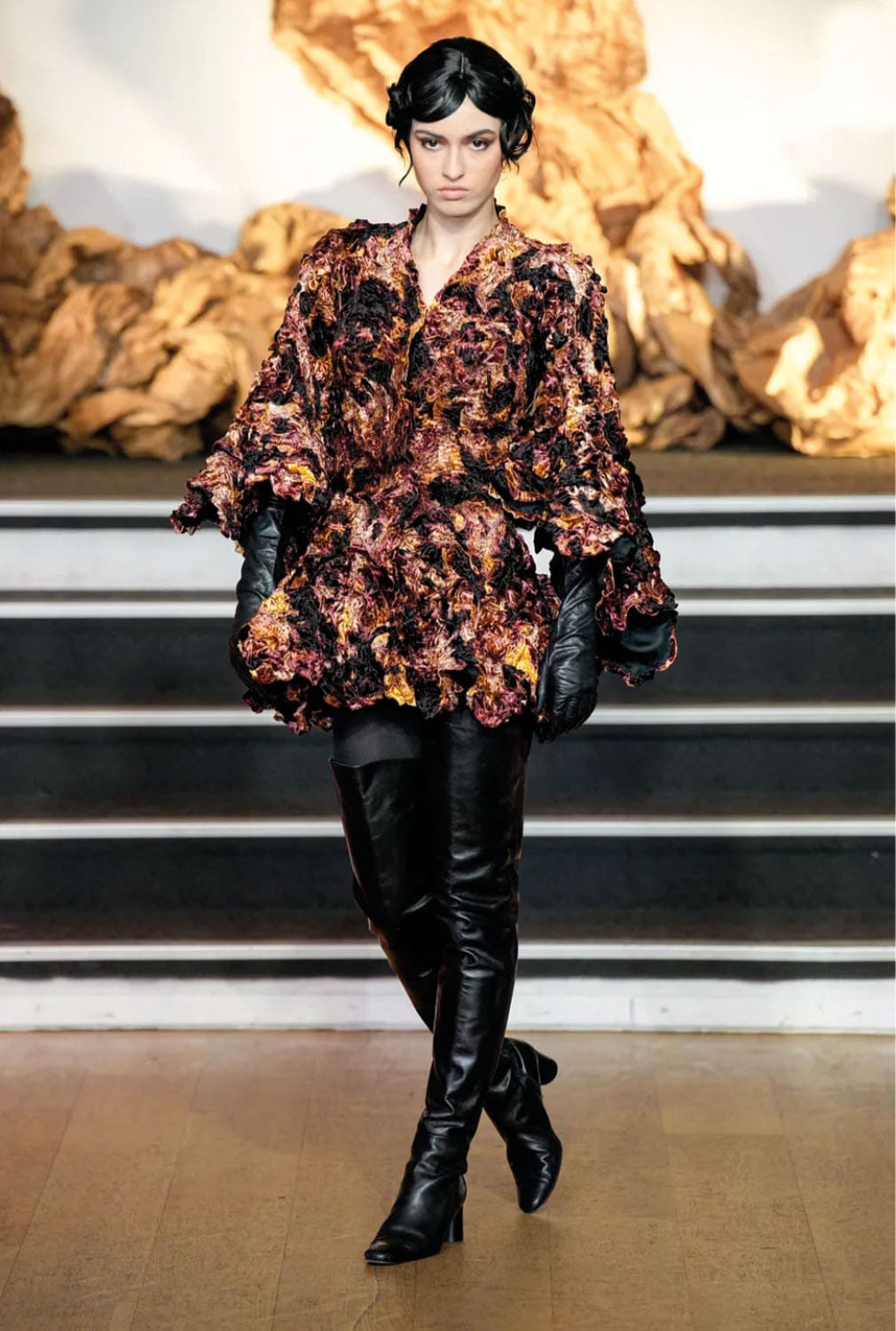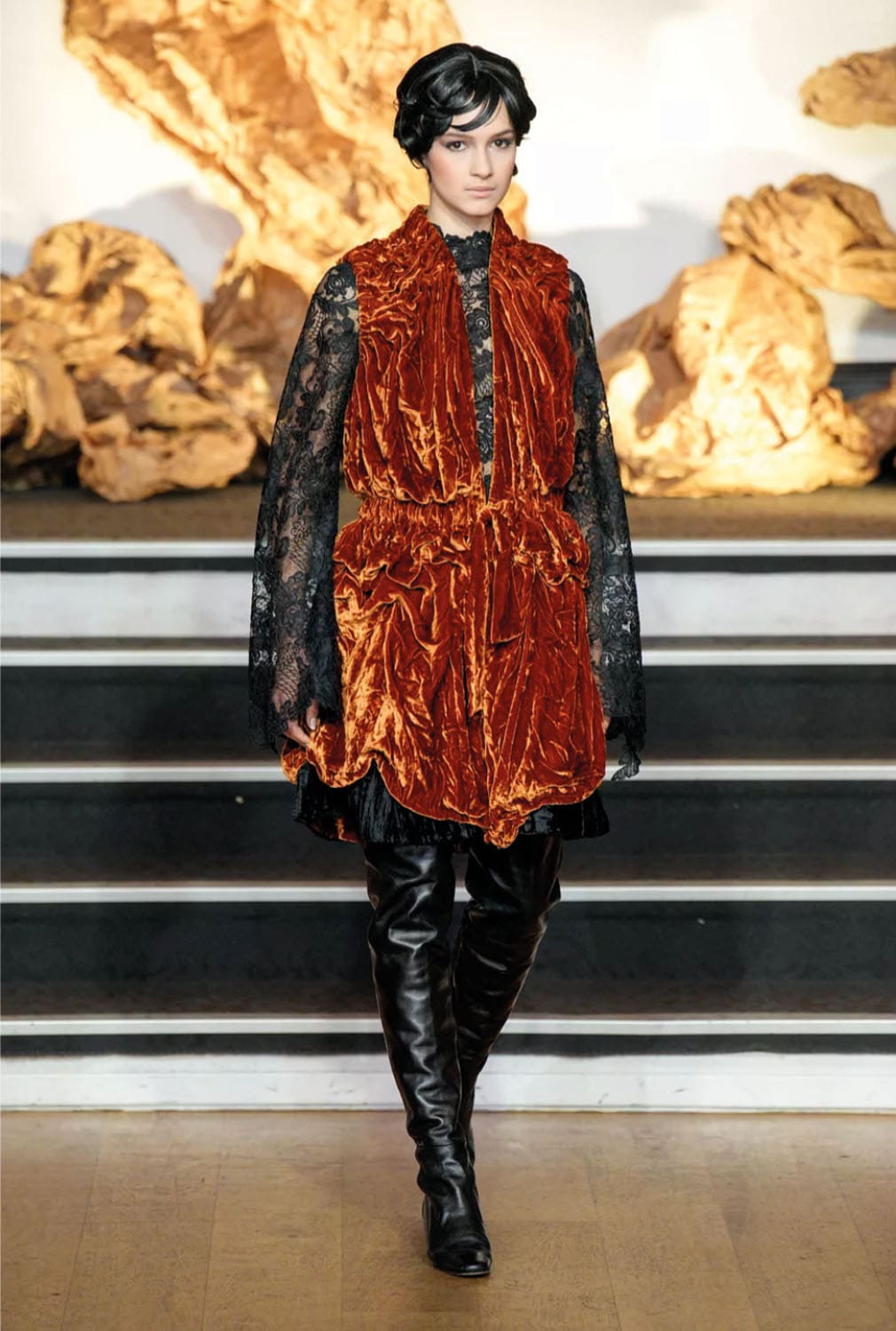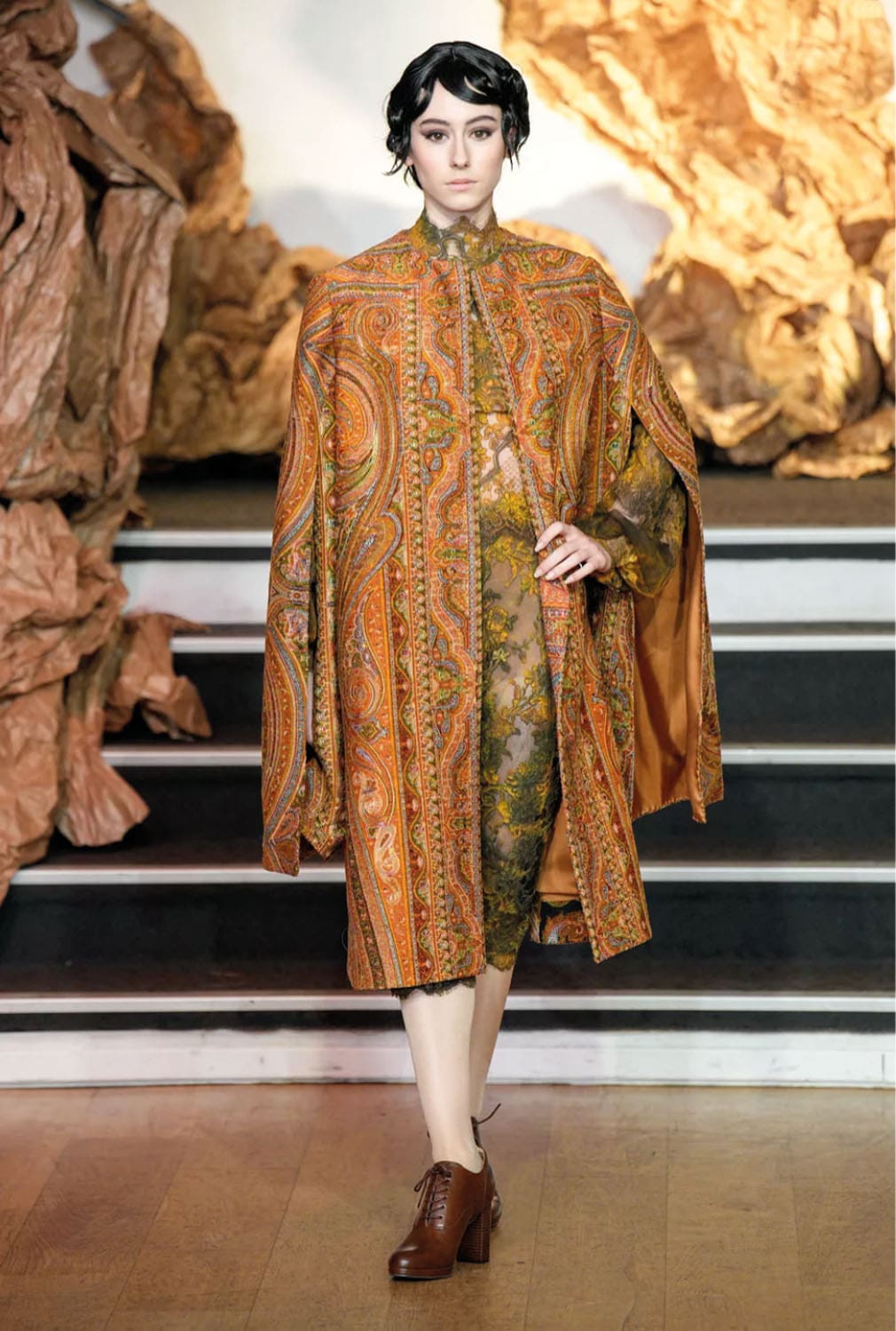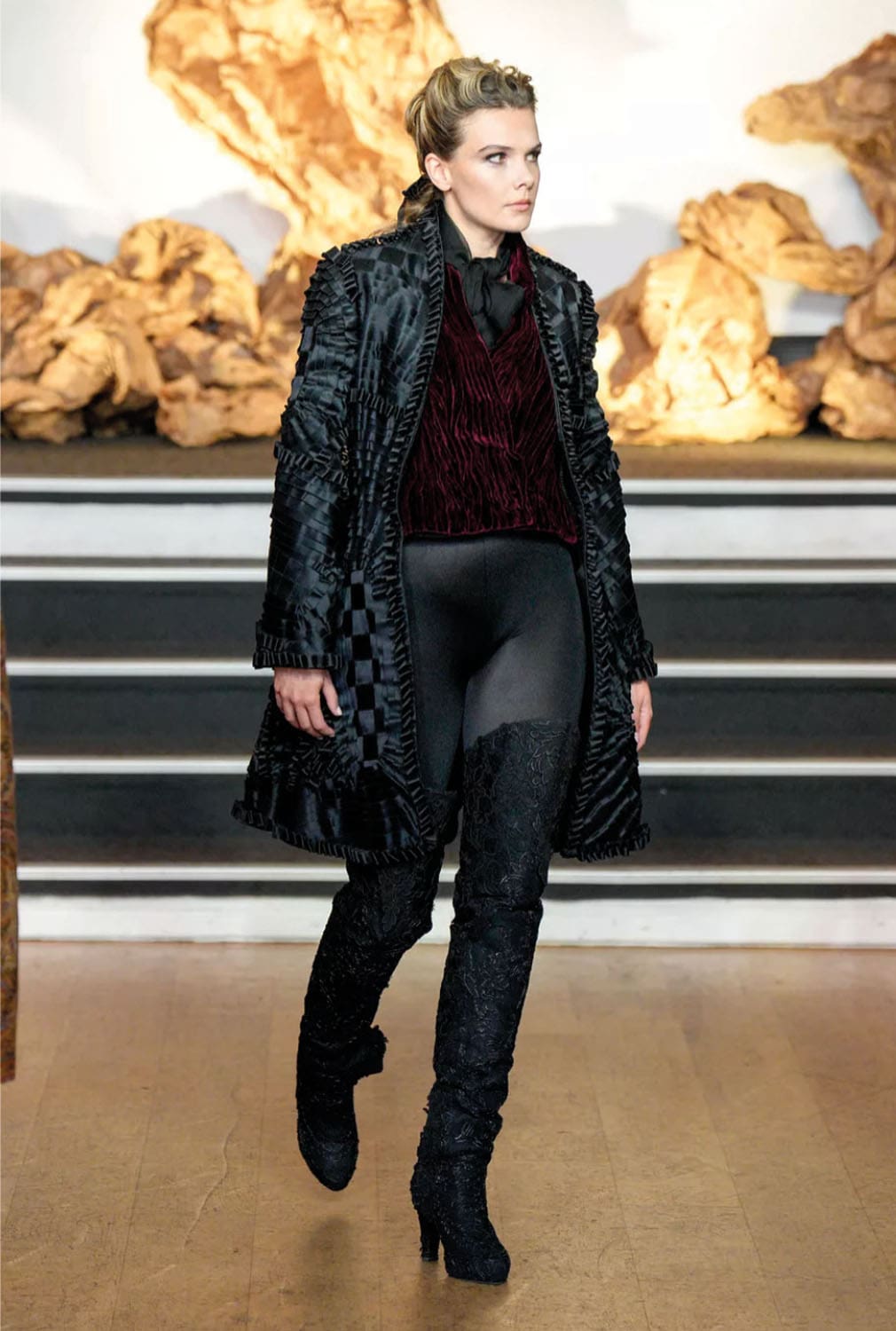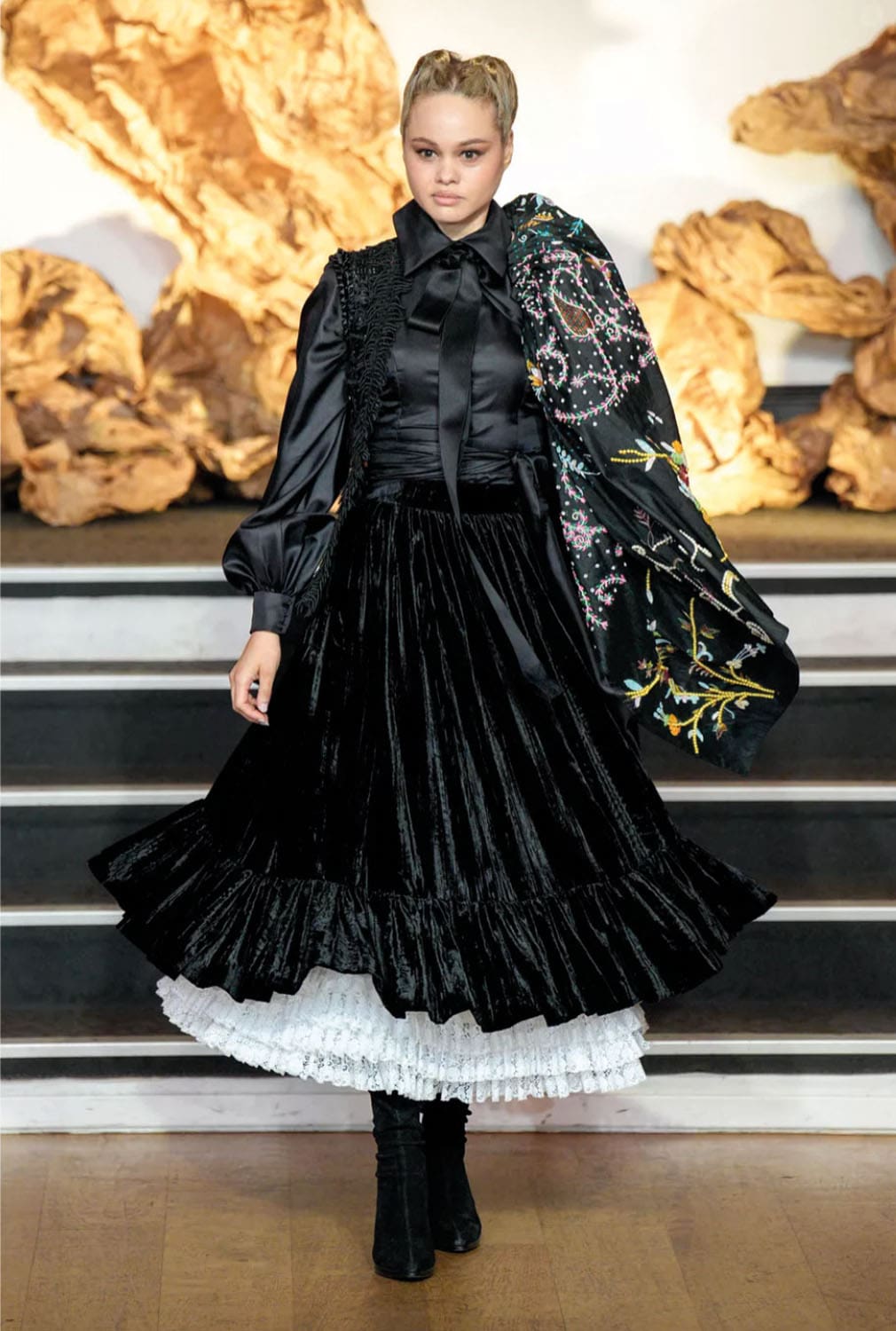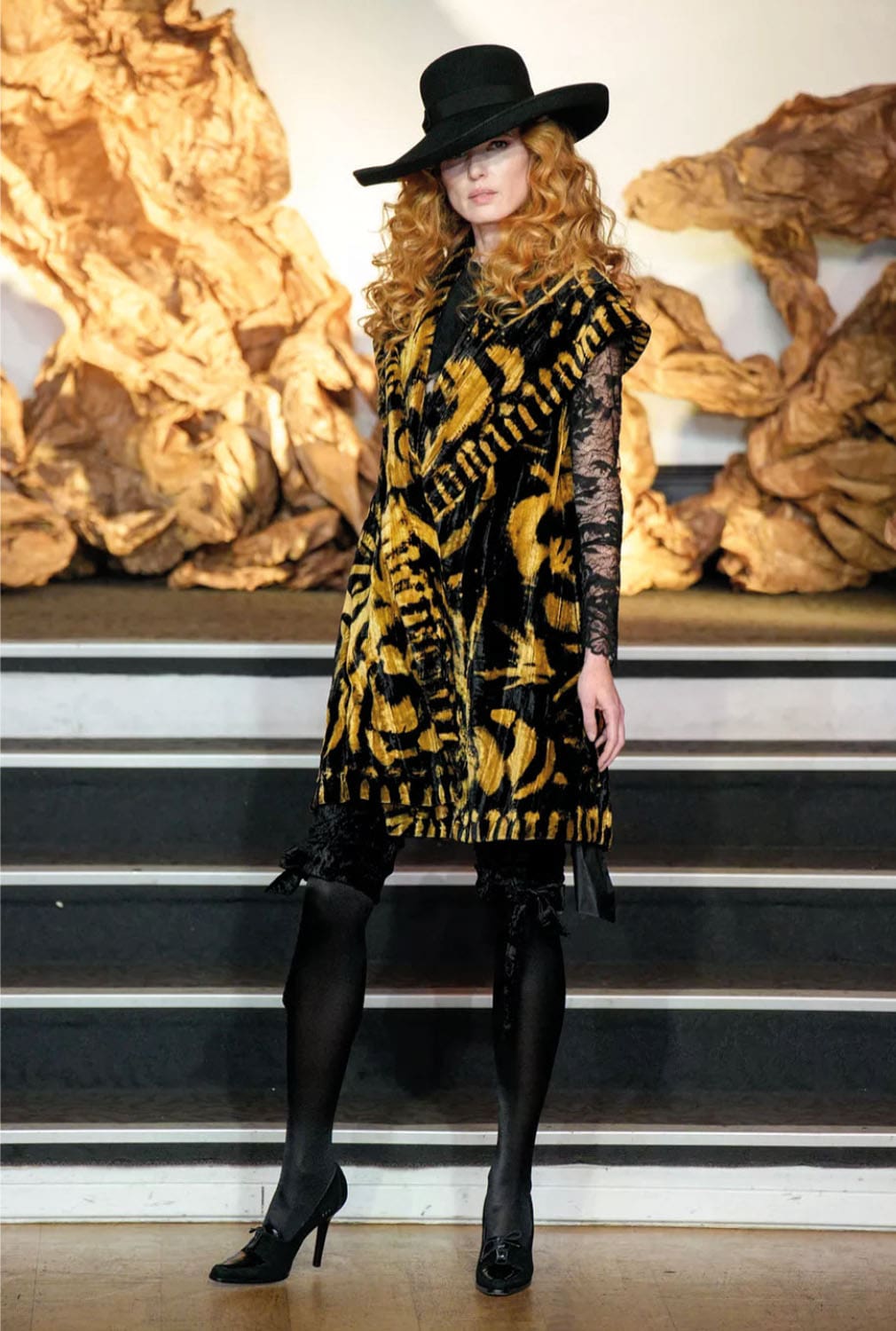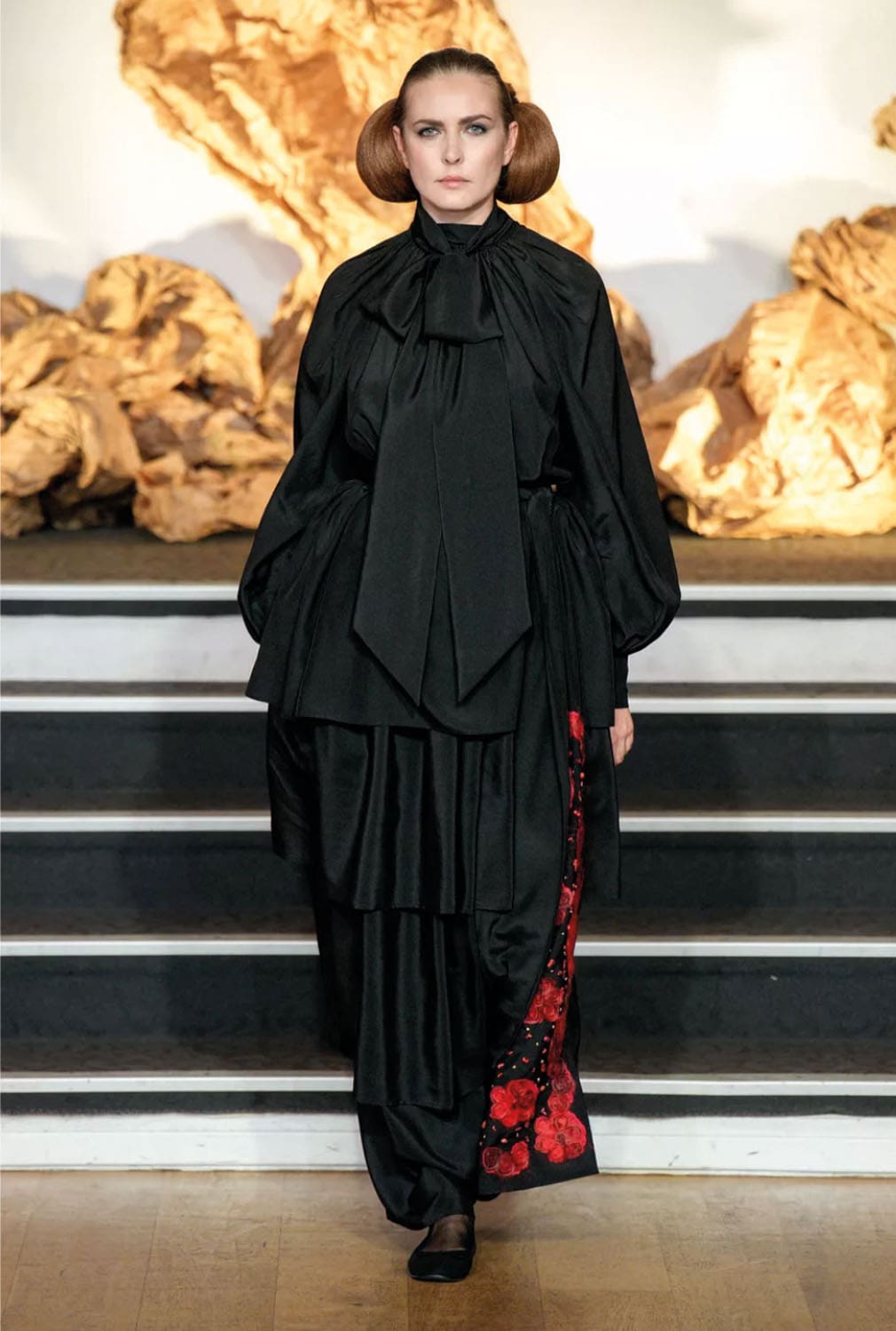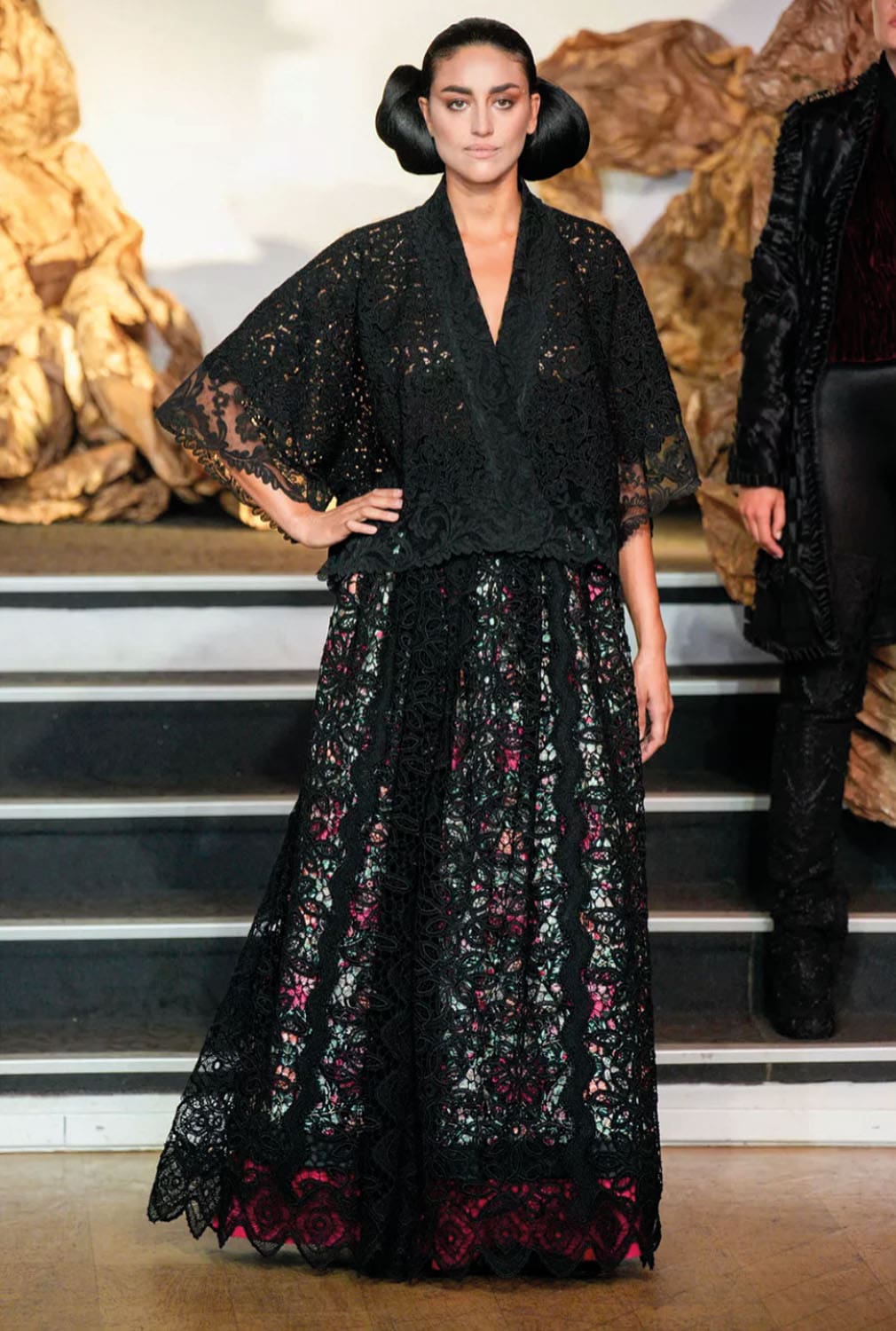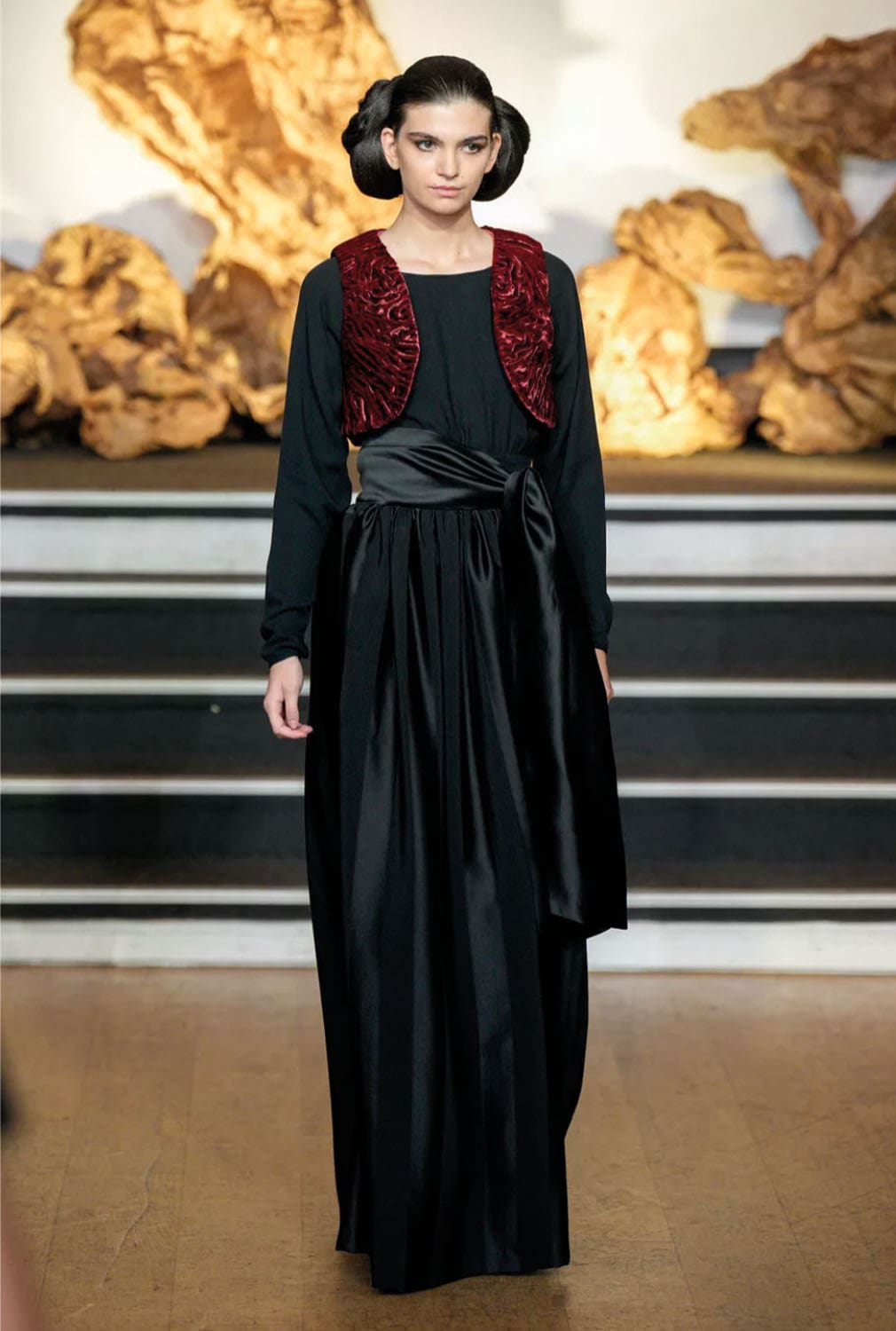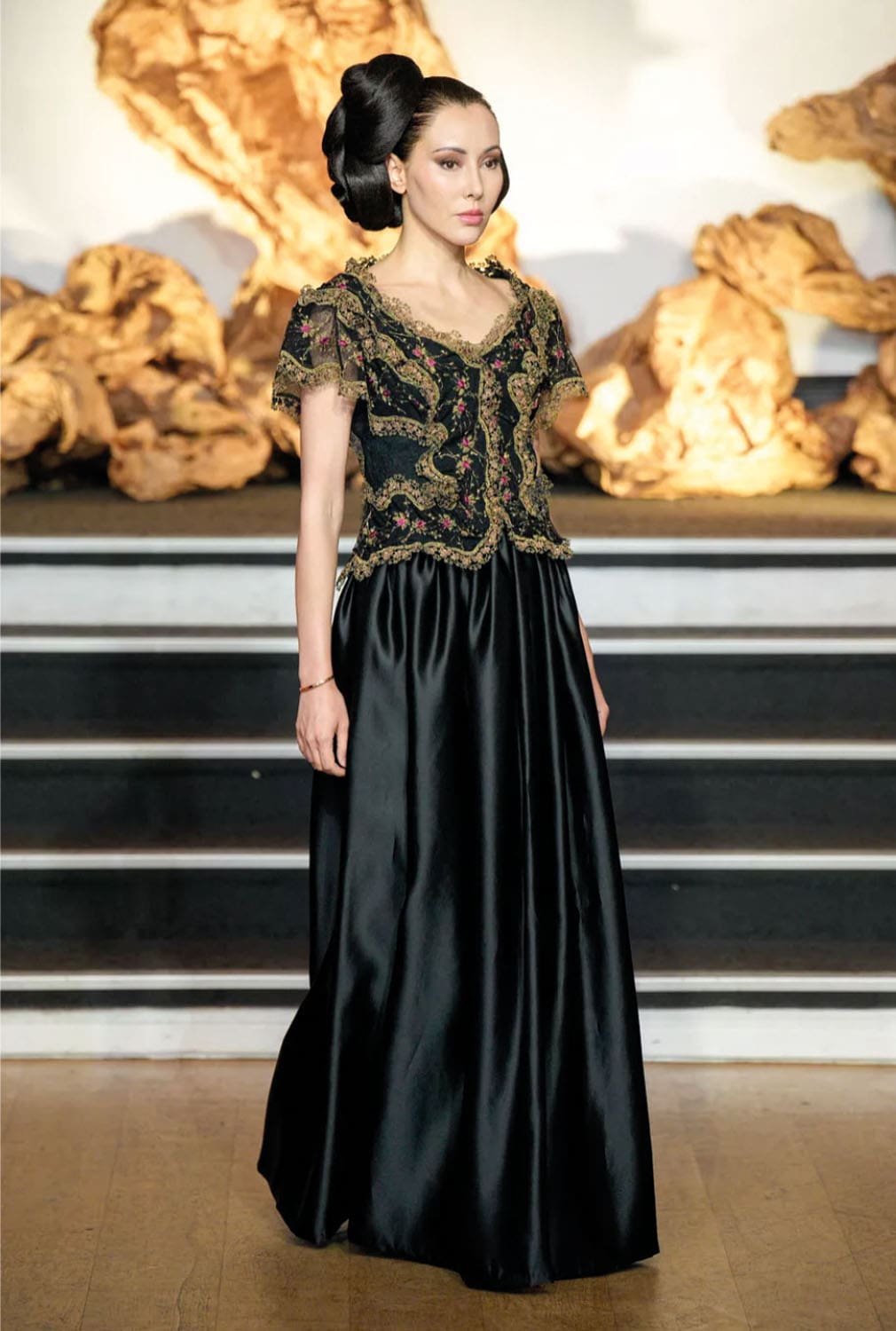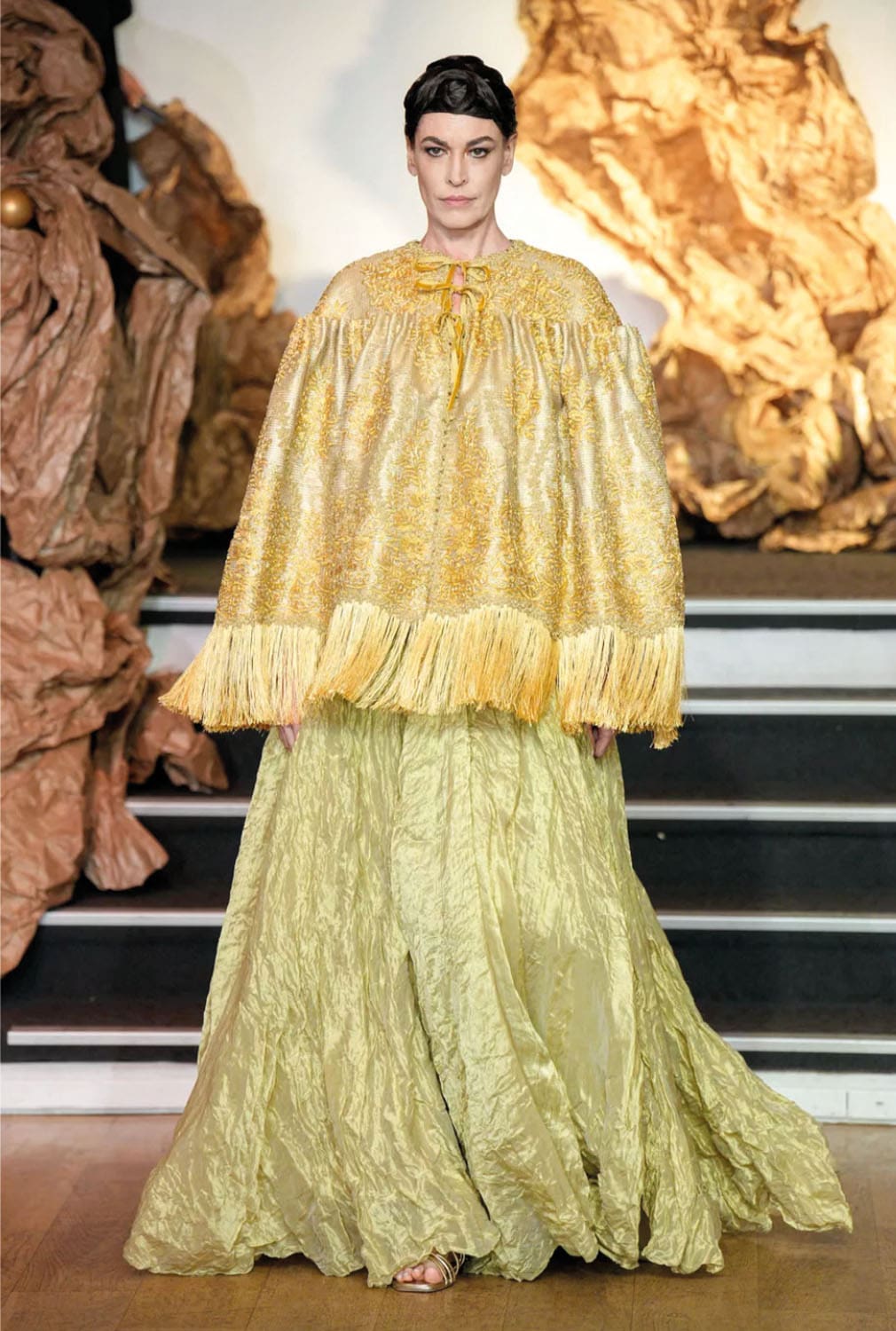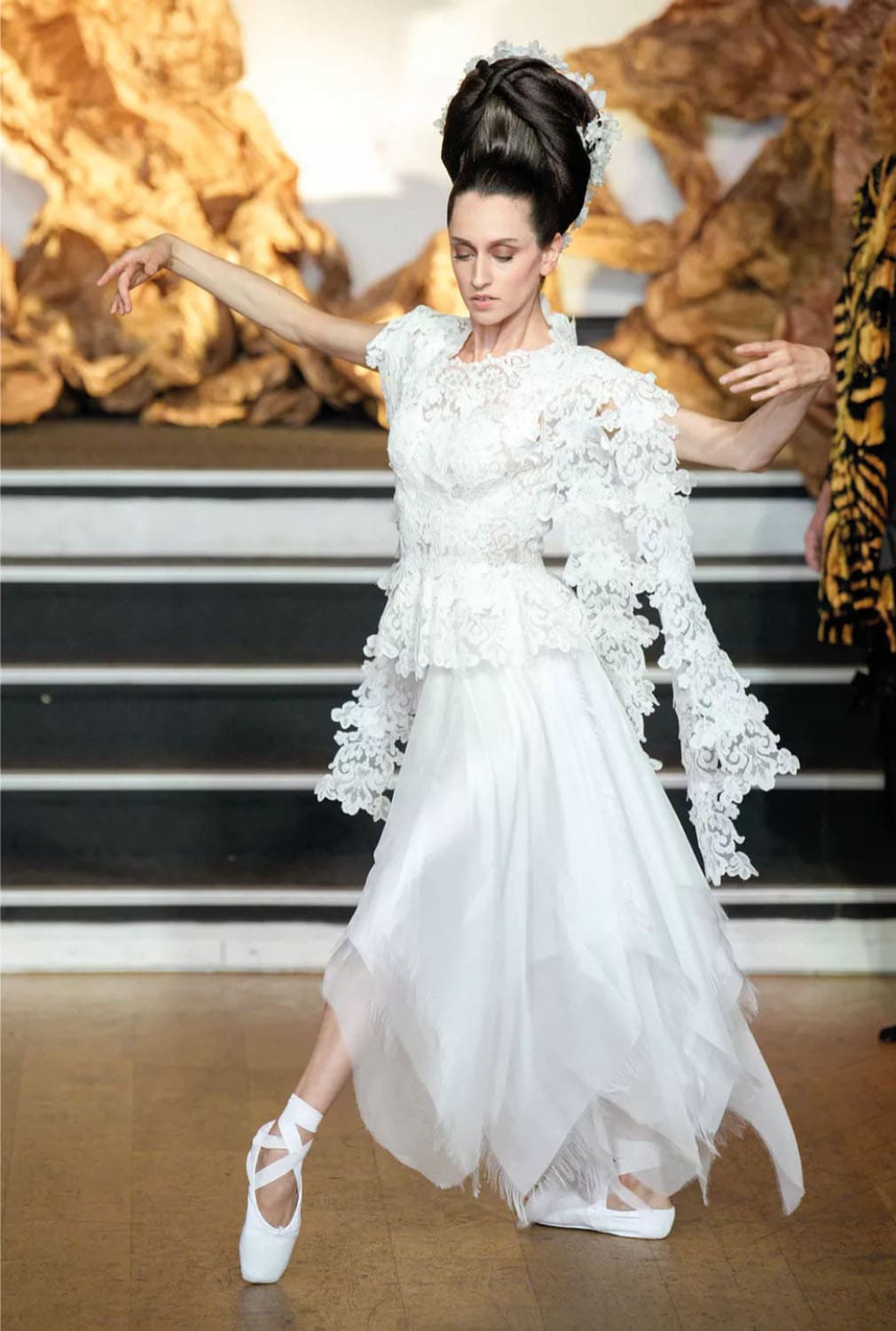Franck Sorbier Fall Winter 2025-2026 Haute Couture “Eldorado”. Story by RUNWAY MAGAZINE. Photo Courtesy: Franck Sorbier.
In the gleaming silence of a world gasping for meaning, Franck Sorbier opened the door to a forgotten dream. His Fall-Winter 2025-2026 Haute Couture collection—Eldorado—is not so much a fashion proposal as it is an archaeological gesture. Here, couture becomes artifact, history, and resistance all at once.
Sorbier has long positioned himself outside of the fashion system, a couturier whose métier is guided less by market trends than by myth, memory, and mourning. With Eldorado, he excavates not only the golden dust of the Inca Empire but also the shimmering illusions that continue to lure civilization down well-trodden paths of conquest, extraction, and excess. The Eldorado of today is no longer merely gold—it is AI, cryptocurrency, space tourism. Sorbier does not applaud this. He observes it, names it, and—most audaciously—dresses it.
A Myth in Layers
The collection is anchored in the legend of Eldorado, reinterpreted through a visual language that spans Incan regalia, ecclesiastical baroque, colonial trauma, and Andean resilience. Sorbier reweaves these symbols not as pastiche but as homage. This is couture as historiography.
The silhouettes are steeped in both ritual and revolt. “Inti,” a long gown in pale gold organza, is crowned with a sculpted sun-and-moon sceptre—an ode to the solar deity of the Andes. “Chakana,” “Atahualpa,” and “Ekeko” each tell stories of ancestral power, adorned with clay jewelry, hand-patinated in gold by Bruno Le Page. These are not accessories—they are relics of reverence.
But then come the Conquistadores, clad in velvet frock coats and armor of black silk ribbons. Their appearance is neither glorified nor vilified—they are placed beside the Incan goddesses, as if to expose the brutal choreography of cultural encounter. The dialogue is visual, but the tension is palpable.
The Baroque and the Barbed
As the show unfolds, Sorbier unspools a vision of hybridity. “Machu Picchu,” with its embroidered cape and Valenciennes lace petticoat, offers sanctuary—while “L’Ange Letiel,” painted by Isabelle Tartière-Sorbier herself, is a baroque vision in mourning. It is here that the poetry of the past meets the melancholy of the present.
There are moments of levity too, if one knows where to look. “Paloma” and “Paz,” named after imagined Lima dames, strut in pleated skirts and embroidered wool laces, dancing between colonial inheritance and modern assertion. “Mama Killa,” the moon goddess, emerges last, her silhouette swathed in white creponné chiffon—light, but not weightless.
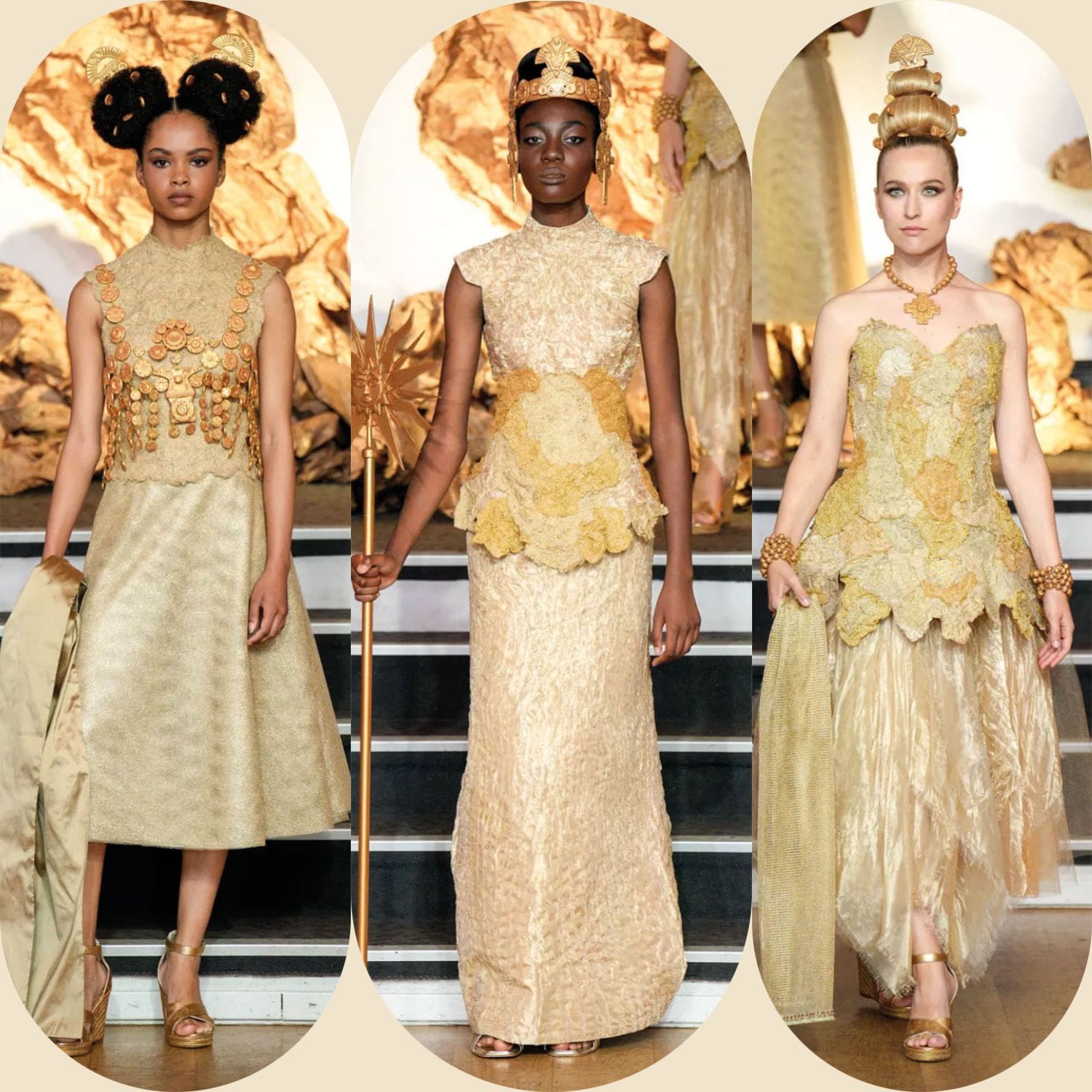
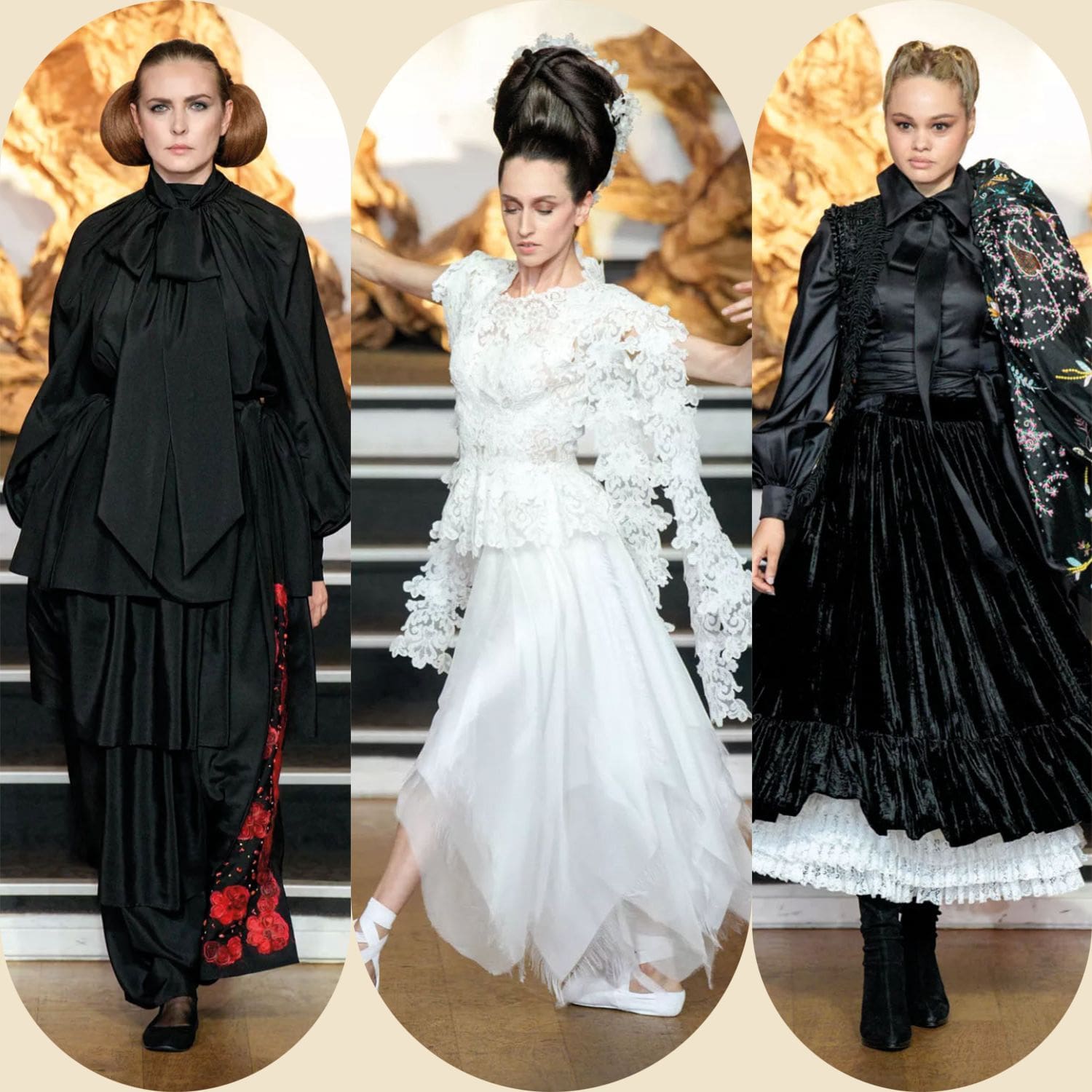
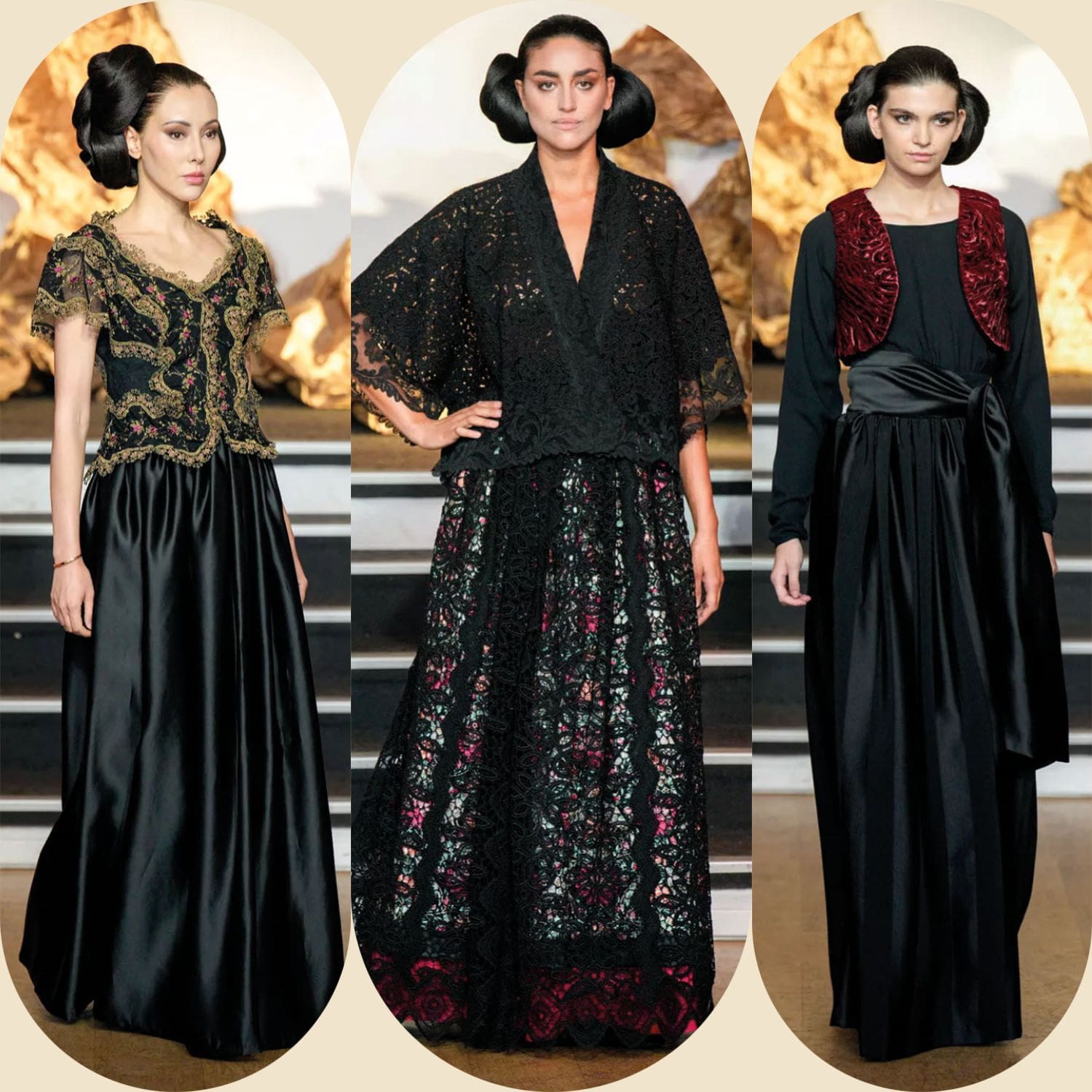
Craft as a Political Act
As ever, Sorbier reminds us that Haute Couture is not merely about cut and cloth. It is about conscience. His manifesto, subtly tucked in the press materials, resounds with clarity: No to animal suffering. No to the fur trade. This is not an embellishment—it is a position. It is also a reminder that in Sorbier’s atelier, ethics and aesthetics are stitched together thread by thread.
And in an industry increasingly anesthetized by profit margins and algorithmic taste, Sorbier’s work feels radical precisely because it refuses to flatter the present. Instead, it confronts it with history, craft, and care.
A Garden Cultivated Against the Storm
In his closing words, Sorbier speaks of serenity—not as luxury, but as longing. “For our small company, Eldorado would be to work in better conditions, without fear of tomorrow… to best cultivate our garden.” One hears Voltaire’s Candide echoing here, softly but insistently.
Eldorado, then, is not a destination. It is a mirage that reveals the truth about our obsessions, our losses, and our hopes. And in Sorbier’s hands, it becomes what Haute Couture so rarely allows itself to be: an act of remembering, of imagining otherwise, of dressing the soul.
See All Looks Franck Sorbier Fall Winter 2025-2026
